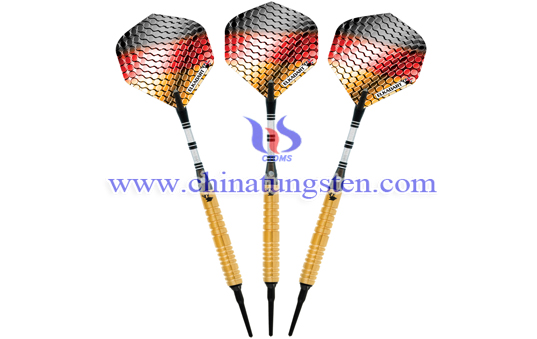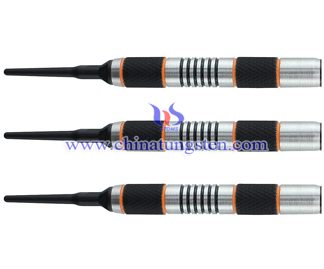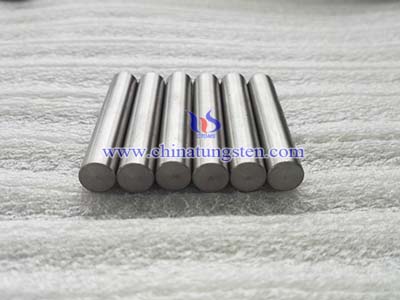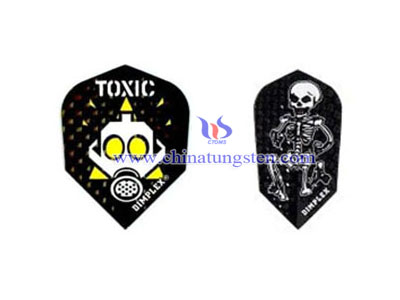Unlike steel-tip, the difference of soft-tip is in the width of the opening of the barrel, not the action of the point. Your two choices here are ¼" and 2ba.
¼": This is definitely the wider of the two choices. Though I do not know this for a fact (do you), I suspect this was the first size that came out with soft tip tungsten darts.
2ba: Much narrower and much more common. It's been my experience that if you walk into a pub with soft-tip machines, you are more likely to find a box or bowl of 2ba replacement tips than you are of the ¼" variety.
A light weight dart with a soft plastic point is thrown at a board consisting of a perforated plastic face. Each hole in the board is sized to fit the dart point and has beveled edges to facilitate entry of the point. A series of sensors and circuits behind the face of the dartboard note the impact and inform the central computer processor, which calulates and displays the score for the players to see.
The magic formula to increasing your precision, and your score, is to choose a dart that fits your personal preference. Once you choose a dart that you enjoy tossing, consistency will follow.
Do you prefer a heavier dart, or a lighter dart? You will discover several darts on the market in a range of weights that top out at 50 grams and are available as light as Twelve grams. The most well liked weights used by avid dart players is generally in the 16 gram to 26 gram variety. The choice of your own dart weight is one of the more crucial decisions you have to make. The only decent method to figure out this, would be to throw darts of different weights and observe what feels perfect to you. A terrific chance to do this would be through a buddy or any place that hosts up dart play, like the neighborhood tavern. I have had several chances to throw other people's darts. I've discovered others to be very helpful in supplying their own view about their particular darts, and more than pleased to let me throw them an occasion or two to acquire a feel for them. Most passionate dart players are proud of their darts, and take advantage of the opportunity to show them off. Several darts do support the adding of weight in two gram increments. A heavy dart will probably require a harder throwing style compared to a lighter dart.
The material which the darts are made from will have another essential factor in your dart choice process. Darts had typically been made of brass. Several years later, darts with barrels constructed from tungsten along with other alloys came into the arena. These swiftly came into common use because of the recognized added benefits they offer. Tungsten darts include barrels that are thinner in diameter compared to darts manufactured with brass barrels. The advantages of having a slimmer dart result from the truth that you can position additional, thinner darts within a smaller space than you can place bigger diameter darts. For instance, there is certainly simply so much space inside the bulls eye of a dart board. How much easier would it be to put 3 slender darts, compared to 3 thick darts inside that compact area. Since they occupy much less space on the dart board, they are usually less likely to cause deflections of your later tossed darts. The tungsten dart barrels are more dense, and the tungsten matter is weightier. To help you to keep a confident weight, while continually getting the small diameter. It has been a very long time since I have played against any opponent, that wasn't throwing tungsten darts. The attractiveness of soft tip tungsten darts are driven by its advantages.
Lastly, you must evaluate the feel of the grip that you prefer. There are various kinds of knurling that could be used on your barrels. You are going to frequently observe the classic sleek finish, with bands present on that barrel. Examples of these are a popular style, but seem to be plummeting from acceptance with dart players favoring a harder or more rough finish. The coarseness of the surface area can help to offer an improved, more assured grip. The chances of slippage are considerably decreased. Fine knurling and coarse knurling are both well-liked, with varying degrees of style and styles.





